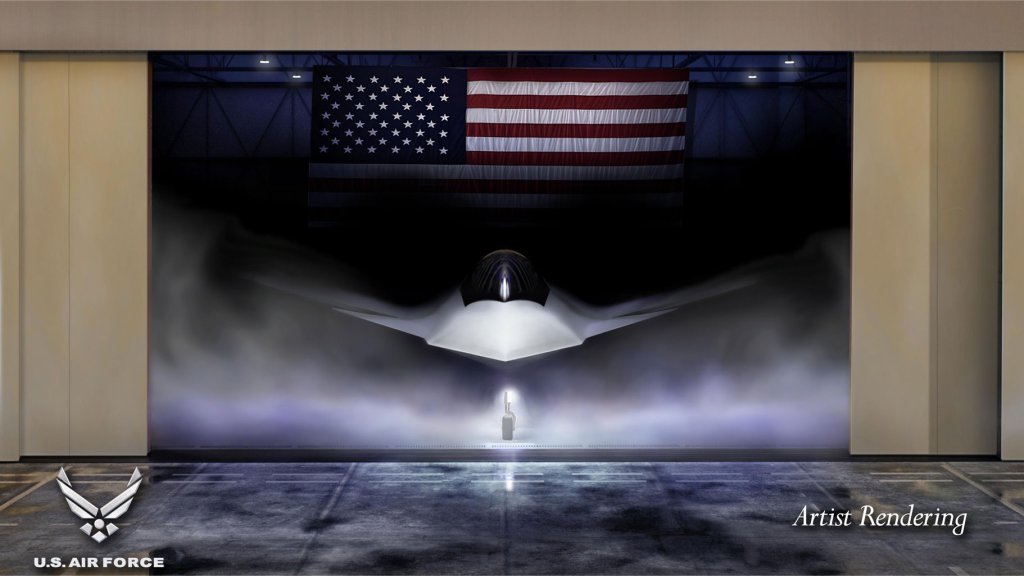A design of a patch for the F-47 System Management Office (SMO) that has been circulating on social media was indeed created by members of that organization, but is still being refined and hasn’t been formalized, the Air Force has confirmed. The patch’s central feature, which appears to be a phoenix or a firebird, raises the question of whether the sixth-generation fighter may already have a nickname.
User @SR_Planespotter on X was first to share a look at the patch earlier this month. In March, Boeing’s next-generation fighter was officially declared the winner of a competition for what had previously been referred to as the Next Generation Air Dominance (NGAD) combat jet or “platform.”
“The patch is an early design concept that was generated within Air Combat Command’s F-47 System Management Office,” an Air Combat Command (ACC) spokesperson told TWZ. “It is still being developed, and there is currently no official patch being worn by anyone in the Air Force.”

In addition to the phoenix or firebird, the circular patch has “ACC F-47 SMO” in white lettering and three yellow or gold-colored triangles/arrows/deltas with trailing lines along the left side. On the right side, there is “FBC” written in black lettering and a white-colored ‘path,’ which we will come back to later on. There are six red stars of equal size, three above and three below the central ‘bird’ motif, as well.
Under the main body of the patch is the Latin “Superamus Perstamus Letamus” written in white lettering. A basic machine translation of this is “We overcome. We Persist. We Rejoice.” The same motto has been seen on other patches and insignias, some dating back many years now, associated with the Air Force’s Next Generation Air Dominance (NGAD) initiative and the Agile Development Office within the Fighters and Advanced Aircraft Directorate of the Air Force Life Cycle Management Center (AFLCMC). The Agile Development Office evolved from the Program Executive Office for Advanced Aviation, first created in 2019 to serve as a central manager for NGAD efforts, including the work that led to the F-47, which you can read more about here.

Much about the meaning of the various elements of the F-47 SMO patch design otherwise remains unconfirmed.
Triangles, arrows, and delta shapes are often used in Air Force heraldry to symbolize aircraft or subordinate units. The Agile Development Office insignia seen earlier in this story also has three deltas with trailing lines, but in gray. In addition to Boeing, Lockheed Martin and Northrop Grumman had also competed in the NGAD combat jet competition, but whether any of this is a reference to that fact is not known. Northrop Grumman had bowed out in 2023, and there are indications that its entrant would have otherwise been cut.
Stars are also common. Six of them together often refers to the top-secret flight test center at Groom Lake in Nevada, better known as Area 51. It is worth noting here that Boeing and Lockheed both built top-secret X-plane demonstrators as part of Defense Advanced Research Projects Agency (DARPA) efforts that fed into NGAD and ultimately the F-47. They are understood to have been flight tested at Area 51.

The white ‘path’ on the right side of the patch looks to be an outline of a portion of China’s eastern coastline. The Air Force has framed the F-47 as key to ensuring it can achieve air superiority in future conflicts, especially high-end fights against an opponent like China. The sixth-generation fighters would be at the ‘tip of the spear’ to penetrate through the People’s Liberation Army’s (PLA) extensive anti-access and area denial ‘bubbles’ in any such scenario in the Pacific.
The central phoenix/firebird motif (which may or may not be tied in some way to the as yet unexplained “FBC” acronym) is particularly interesting to consider in light of what is known about the history to date of the F-47 program and the work that preceded it. Until President Donald Trump’s administration decided to proceed, there was a very real chance of the program being cancelled in favor of other priorities. In April, former Secretary of the Air Force Frank Kendall, who left his post in January, penned an opinion piece questioning the decision to move ahead.

Whether it is the intended symbolism of the patch or not, a phoenix would certainly be appropriate for the F-47 program. A legendary immortal bird commonly associated with ancient Greek mythology, but also found in other traditions, it is often depicted ‘rising from the ashes’ of its own demise.
There is also the mythical firebird found across Slavic folklore, which is both a blessing and a curse to anyone who tries to capture it.
In the same way, phoenix or firebird might be plausible nicknames for the F-47, officially or unofficially. However, phoenix, at least, is unlikely to become the formal name for the jet. The U.S. military just announced in August that Phoenix II is now the official moniker for the U.S. Navy’s future E-130J aircraft. Some kind of double-up (Phoenix III on top of Phoenix II), or a renaming of the E-130J, are possibilities, but seem less likely. The E-130J is a so-called ‘doomsday plane’ that will be tasked with acting as an airborne command and control node for the Navy’s nuclear ballistic missile submarines, including being able to send orders to them to launch strikes while submerged, a mission set referred to as Take Charge and Move Out (TACAMO) that you can learn more about here.

We already know the F-47 designation is tied to the Republic P-47 of World War II fame, the official nickname for which was Thunderbolt. The Air Force has also said the “47” is a reference to the year the Air Force was founded (1947) and President Trump (the 45th and 47th President). The P-47 was subsequently redesignated the F-47 before the type was retired.

It’s worth noting here that the A-10, better known by its unofficial nickname, Warthog, is also officially dubbed the Thunderbolt II, in homage to the P-47. The Warthogs are set to be retired well before the new F-47s start to enter service, which would free up the Thunderbolt name.
As the A-10 underscores, unofficial nicknames for American military aircraft are also common, in general, and sometimes become more widely used than the official ones.
The formal naming of an aircraft like the F-47, expected to be a centerpiece of Air Force power projection for decades to come, is likely to be the subject of significant debate, whatever unofficial monikers it might pick up along the way. Prime contractor Boeing is now building the first of the jets, and the hope is that a first flight will occur in 2028. When operational units might begin to receive F-47s is unclear.
More details about the F-47 SMO patch’s symbolism may emerge as the program gets more underway. In the meantime, we at least know it is a real design that is still a work in progress.
Howard Altman contributed to this story.
Contact the author: [email protected]
